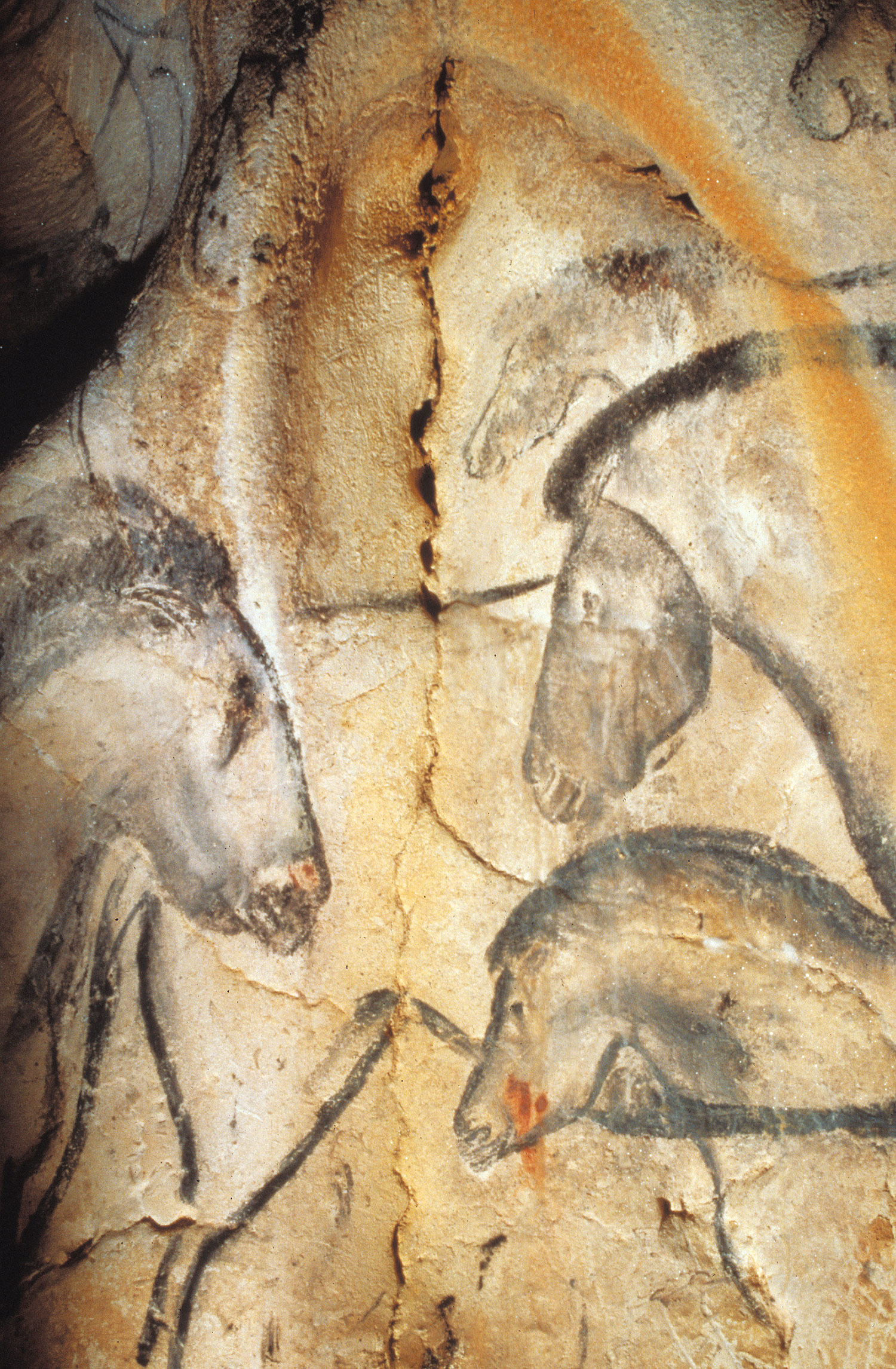So, my favorite part of student teaching was my co-operating teacher's Artist of the Week (AOTW) weekly feature. Every week, she'd teach the students about an artist, all the way from prehistoric to contemporary. The list was the same every year. She thought it was very important to incorporate art history into technique. I couldn't agree more. I thought it would be a nice feature here on my blog. I'm not sure I'll be doing one EVERY week, because writing lessons and gathering info. is a lot of work, but I will be sharing both contemporary and historical artists with you all! My co-operating teacher's were chronological, mine will rotate one historical one contemporary, Are you Excited?!
Here is the first "Artist" of the Week:
So, before you start thinking that art is something in a clean, cold, moderately lit, gallery, think again! These rock carvings are hundreds of thousand years old. And they still feel alive to me, maybe because they've never been removed from their original space, or because they're painted on a living rock. Maybe it's the primitive mark marking that has so much expression, but I love that these cave paintings are still here after the people are not.
It makes me think of a conversation I had with a well known artist, Ian Tweedy (images of his work). He was telling me how museums are nothing more than tombs for art. He had sold a piece to a museum (or gallery) and it was on display. While he was there, he noticed the piece wasn't displayed correctly. He approached the piece and attempted to correct it. But before he could touch it, a security guard grabbed and stopped him. When he tried explaining that he was the artist and that the piece was not displayed properly, the security guard still would not let him near it. He realized, then, that his piece was dead. It was no longer his work, it belonged to the museum and it would never have it's life back. I think of that story and I think of these caves and I wonder if the caves still have the life they do in these photos. Or have the scientists and anthropologists dissected and contained and exploited these caves?
I also find it interesting when something like this is discovered, it gets a lot media attention, people document it and cite it and get excited. Yet, when schools are quick to cut funds for the arts, people rarely do anything to stop it. I guess it's shocking to me, since people were communicating with images before written and even spoken word. I find by looking back on these images from history inspiring, humbling and thought provoking. I hope you enjoyed this first week of Art History, I've got a lot more Artists to share :)
source 1.
source 2.
source 3.
source 4.
source 5.
Here is the first "Artist" of the Week:
Chauvet-Pont-d'Arc Cave
Normally, I'd start off with Lascaux, but as it turns out, Lascaux is NOT the oldest painting, rather Chauvet-Pont-d'Arc Cave is, or at least they're older. They date back to about 30,000 years ago.
It makes me think of a conversation I had with a well known artist, Ian Tweedy (images of his work). He was telling me how museums are nothing more than tombs for art. He had sold a piece to a museum (or gallery) and it was on display. While he was there, he noticed the piece wasn't displayed correctly. He approached the piece and attempted to correct it. But before he could touch it, a security guard grabbed and stopped him. When he tried explaining that he was the artist and that the piece was not displayed properly, the security guard still would not let him near it. He realized, then, that his piece was dead. It was no longer his work, it belonged to the museum and it would never have it's life back. I think of that story and I think of these caves and I wonder if the caves still have the life they do in these photos. Or have the scientists and anthropologists dissected and contained and exploited these caves?
I also find it interesting when something like this is discovered, it gets a lot media attention, people document it and cite it and get excited. Yet, when schools are quick to cut funds for the arts, people rarely do anything to stop it. I guess it's shocking to me, since people were communicating with images before written and even spoken word. I find by looking back on these images from history inspiring, humbling and thought provoking. I hope you enjoyed this first week of Art History, I've got a lot more Artists to share :)
We've added this movie to our Netflix queue:
source 2.
source 3.
source 4.
source 5.





No comments:
Post a Comment